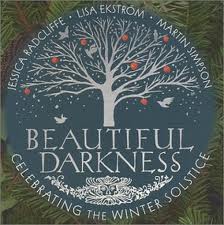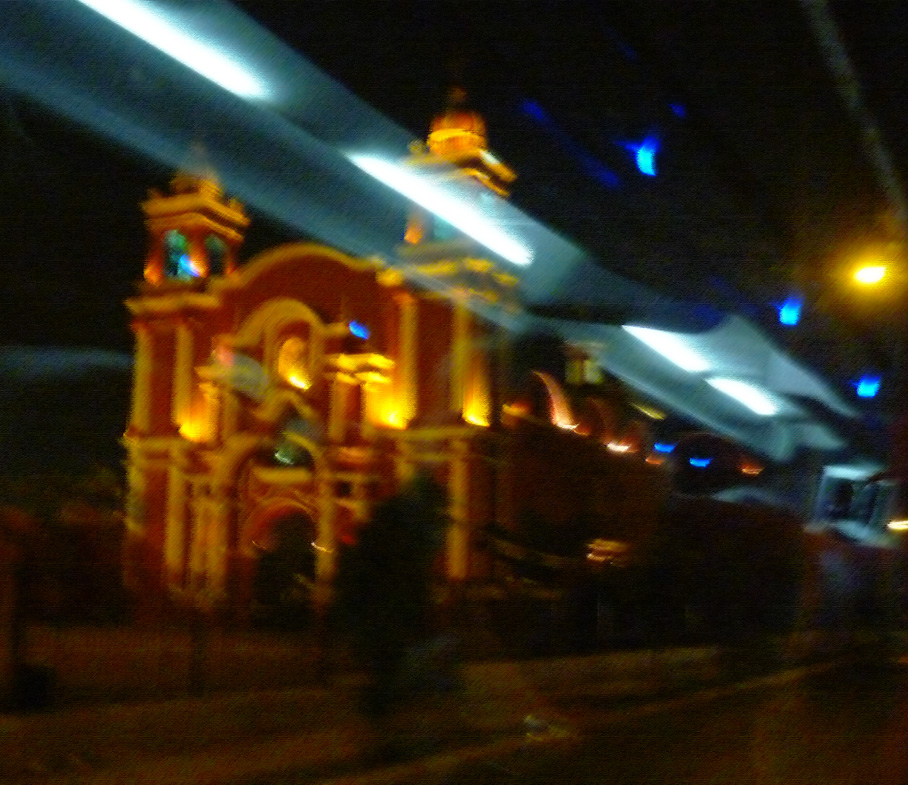Fall New (Harvest) Moon
OK,I made this up. Photocentrism is a focus on the virtue of light that, by implication, puts darkness in a negative or bad relative position. Just because I made it up, however, does not mean I’m joking. The context: the docent annual meeting today and the presentation of a new December of the month called Winterlights. I agree that Winterlights is a complex noun that has a rich associative feel. I even agree that the celebrations in what I have long called holiseason–Thanksgiving to January 6th, the traditional 12th day of Christmas, Epiphany (visit of the Magi to Bethlehem), and the date for the celebration of Christmas in the Eastern Church–offer an unparalleled opportunity to learn from other cultures about matters deep in the human psyche: Thanksgiving, Advent, Deepavali, Hanukkah, Posada, Winter Solstice/Yule, Christmas, Western New Year on January 1, the 12 days of Christmas and maybe Kwaansa, though its constructed nature makes me a bit shy of it. Eid al Adha, the Muslim holiday that marks the end of Hajj by celebrating the Irbrahim and Ishmael story, falls in November this year, but not within holiseason itself, so I’m going to leave it out of this discussion.
The festivals or holidays of light, in particular Deepavali, Hanukkah, Winter Solstice (although is a special case as we shall see) and Christmas (more for what it replaces, Saturnalia, than what it celebrates itself) do have a common thread. Deepavali, Winter Solstice and Christmas all relate to the despair felt in subsistence agriculture communities when the light of the sun seemed as if it would wink out and perhaps disappear altogether. This fear, of the Sun’s final rising, put its mark on well-known pre-historical landmarks like Stonehenge, Chichen-Itza and the great Newgrange dolmen in Ireland. Without a knowledge of the physics and celestial mechanics of the earth’s orbit and the sun’s central place in our solar system, it was frightening to consider the possibility that this time, this winter, the gradual diminishment of daylight might proceed all the way to an apocalyptic darkness. No light for the crops. No crops for the animals. Cold all the time.
What to do? According to theories of sympathetic magic, like produces like, so the logical response to oncoming darkness was a bonfire, a torch, a brave manifestation of light and heat in hopes that the sun, since it is like light and heat, will either be rekindled or seduced into rising again. And these practices work. Each time the bonfires were lit, the torches paraded, the sun did not disappear, but returned to once again start the growing season and stave off starvation and freezing for another year.
All of this makes sense, granting the scientific understandings of these early peoples. As cultures grew more sophisticated and astronomical knowledge became a bit more advanced, however, it did put out the lingering fear that the darkness would one day come and never leave. So holidays that focused on light, especially, but fire, too, became integral parts of the cultural and religious traditions of many peoples.
They all leave out one important thing, though. The virtues of darkness. I first became aware of the following arguments when I began to research the goddess, the great mother goddess. I won’t get into here the debate surrounding the contention by some that a great mother goddess preceded the monotheistic, patriarchal deities of the Abrahamic religions, though I’ll tip my hand enough to say that I don’t find the evidence compelling.
What I found out about darkness surprised me and changed my mind about how I view it. Darkness is as necessary as light. Seeds start growing in the dark soil, away from light and even after they penetrate the surface, their roots continue to press their way into the surrounding nutrient-filled earth. Mammal babies live their first few months of life in the moist, nourishment rich environment of their mother’s womb. (OK, not in the marsupials and the platypus and the echidna’s instance, but you get the drift.) Darkness creates the time of rest and restoration for us and for many animals. It is when we sleep and when we dream. Darkness is the natural condition of space, attenuated by billions of stars only in what amounts to a small total area of the vastness of the universe. Light itself requires a degree of darkness to create vision. Anyone who’s ever been in a whiteout where snow and sky mix to create a vertiginous world with no up and down, no distinguishing characteristics understands the problem well. Or consider a bright, very bright light and its affect on your sight.
This argument can be cast as a feminist one in which the light represents patriarchy and the darkness the creative agency of women. It can also relate to anti-racism work in that we tend to equate darkness, blackness with evil, with corruption and decay. This denies the regenerative, restorative and generative nature of darkness and narrows our conceptual world in literally dangerous ways.
How could this relate to Winterlights? Without this kind of background the celebration of light has a sinister side as well its assumed positive one. The celebrations of light only make sense in terms of the deep cultural background and when we go there we need to understand the fear that created these holidays has also unbalanced our appreciation of the other state, darkness. I’ve not given it any thought, but I imagine there works of art that make darkness a central theme, that could be used to help put the other holidays in a balanced perspective.
Hanukkah is a special case here in which the focus does not seem to be on the Winter Solstice but on a cultural achievement by the Maccabees, the expelling of the Greeks. It does however  share a darkness dispelling theme with the others.
share a darkness dispelling theme with the others.
There is more to say here, much more, but I’m hungry. Catch you later.
 Samain in Lima, Peru. We came back through Lima from a point on the far side of the city just as evening fell. Even there, Samain’s pale memory, Halloween, saw children in Mickey Mouse costumes, princess costumes, carrying plastic pumpkins, many of them walking toward a large shopping mall in one area, a Halloween party rocking the joint.
Samain in Lima, Peru. We came back through Lima from a point on the far side of the city just as evening fell. Even there, Samain’s pale memory, Halloween, saw children in Mickey Mouse costumes, princess costumes, carrying plastic pumpkins, many of them walking toward a large shopping mall in one area, a Halloween party rocking the joint.
 share a darkness dispelling theme with the others.
share a darkness dispelling theme with the others.